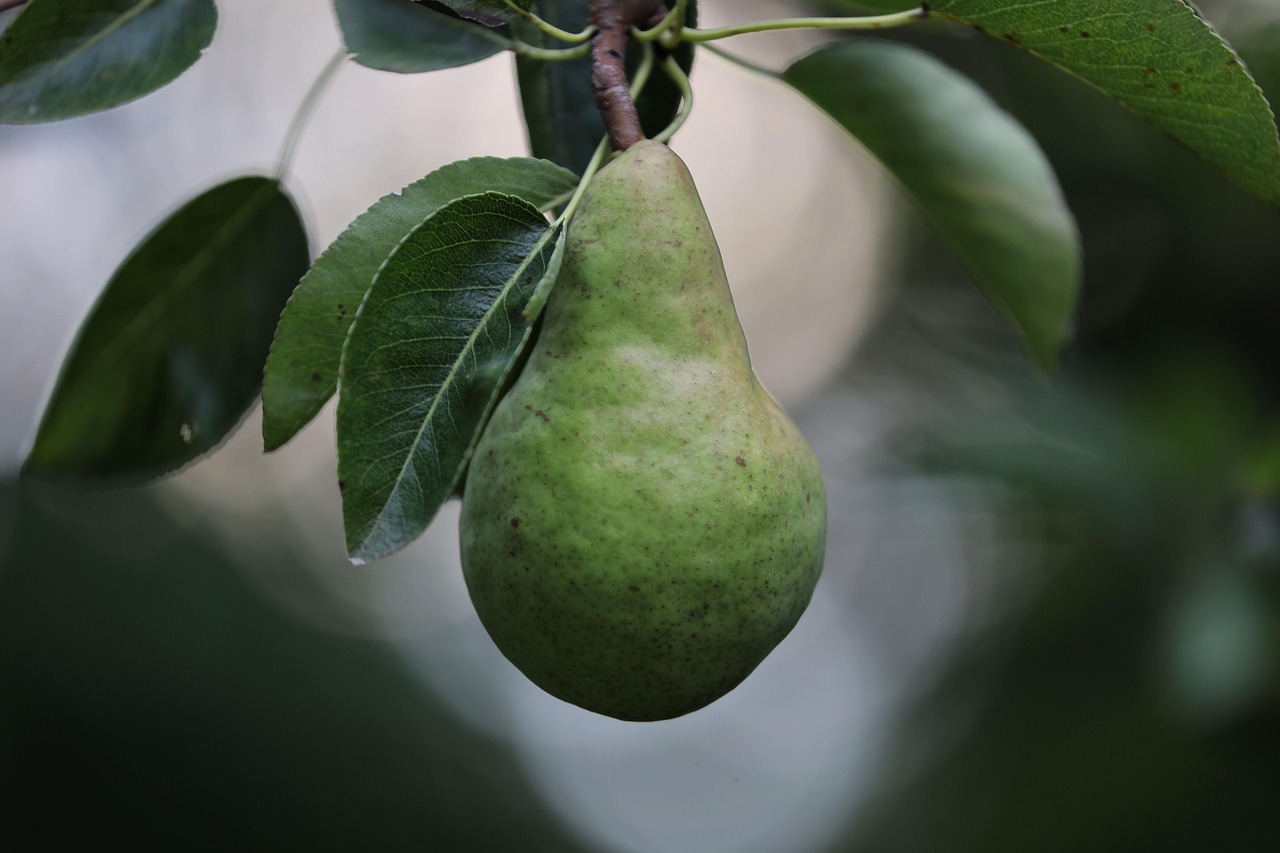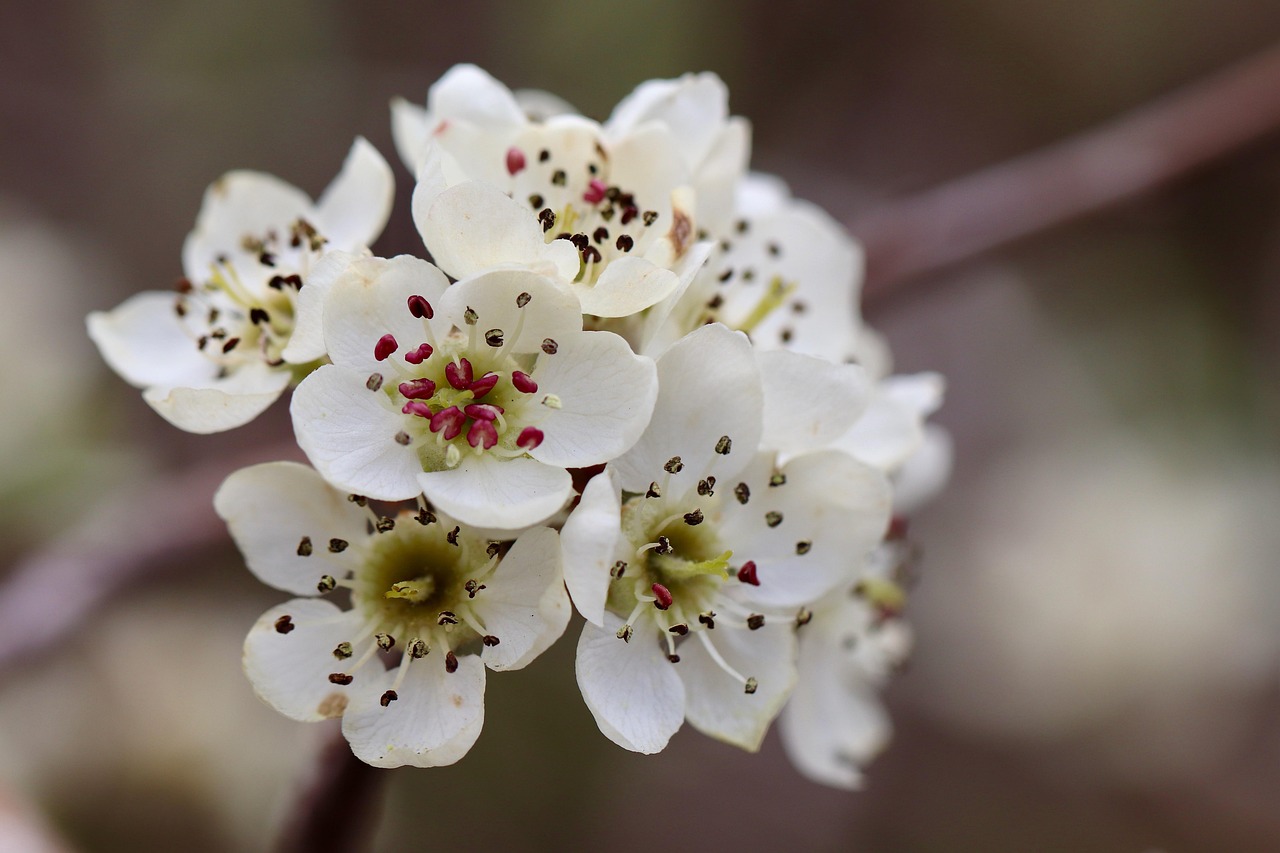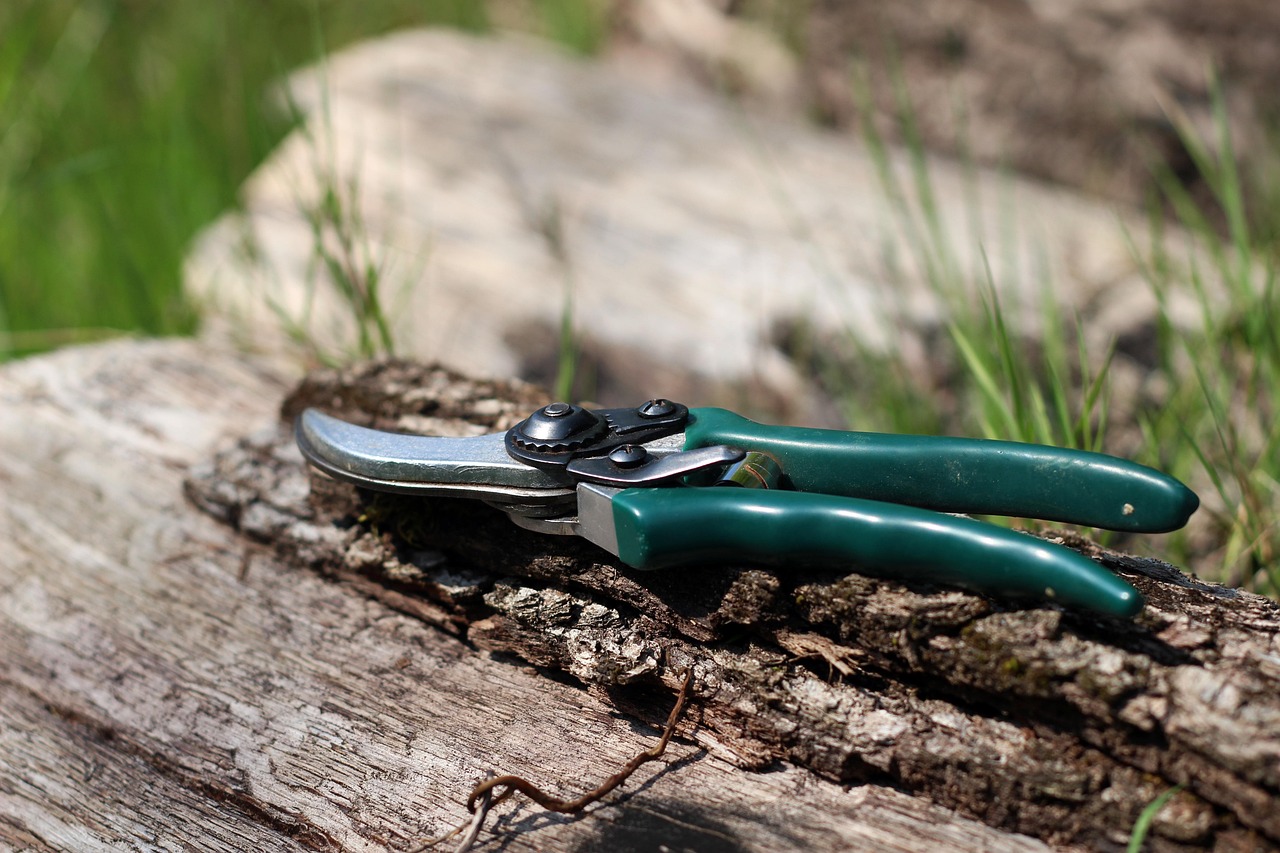Pruning snow pear trees before winter is crucial for their health. Proper pruning helps promote growth, prevents disease, and ensures productive fruiting. Timing and technique are key, especially in frost-prone areas.
Snow pear trees, known for their beautiful blossoms and sweet fruit, thrive in temperate climates. They are particularly admired for their hardy nature and adaptability to various soil types. However, these trees require careful management to ensure they remain healthy and productive. Pruning is an essential part of snow pear tree care, especially as winter approaches. Proper pruning techniques not only prepare the tree for the cold months but also enhance its overall structure and productivity.

The best time to prune snow pear trees is during the dormant season, which typically occurs in late winter or early spring before new growth begins. Pruning at this time minimizes stress on the tree and reduces the risk of frost damage to open wounds. By removing dead or diseased branches, you help to maintain the tree’s health and promote better air circulation, which is vital for preventing fungal infections.
Understanding Snow Pear Tree Growth
To effectively prune a snow pear tree, it’s important to understand its growth habits and seasonal cycles. Snow pear trees generally grow vigorously, producing dense foliage and sturdy branches. If left unpruned, these trees can become overcrowded, leading to poor air circulation and increased susceptibility to pests and diseases.
Key aspects of snow pear tree growth include:

- Growth Rate: Snow pear trees can grow up to 24 inches per year under optimal conditions.
- Fruit Production: They typically bear fruit after three to five years of growth.
- Height: Mature trees can reach heights of 15 to 30 feet.
Understanding these factors can help you determine how much pruning is necessary. By managing the shape and size of your tree, you can ensure that it remains productive and healthy throughout its life.
When to Prune Snow Pear Trees
Timing is critical when it comes to pruning snow pear trees. The goal is to prune during the dormancy period to minimize stress. Here are some guidelines for timing your pruning:
| Month | Activity |
|---|---|
| November – February | Ideal time for pruning; trees are dormant. |
| March | Last chance for pruning before new growth starts. |
| April – October | Avoid pruning; focus on maintenance and monitoring. |
During dormancy, the tree conserves energy and resources. Pruning at this time allows the tree to recover quickly as it enters the growing season. If you prune too late in the spring, you risk damaging new growth and may even reduce fruit production.

Pruning Techniques for Snow Pear Trees
There are several essential pruning techniques that ensure your snow pear tree remains healthy and productive. Each method serves a specific purpose in promoting growth and structure:
Crown Thinning
Crown thinning involves selectively removing branches to improve light penetration and air circulation within the canopy. This method helps reduce the risk of disease by allowing sunlight to reach more parts of the tree. Aim to remove about 20 percent of the inner branches while maintaining the overall shape of the tree.
Crown Reduction
Crown reduction is necessary when a tree becomes too tall or wide. This technique involves shortening branches to maintain a balanced shape and prevent overcrowding. Be sure to cut back to a lateral branch or bud to encourage new growth in the desired direction.

Deadwood Removal
Removing dead or diseased branches is vital for protecting the health of your snow pear tree. Inspect the tree for any signs of damage or disease, such as discoloration or brittleness. Cut these branches back to healthy wood or remove them entirely to prevent further spread of disease.
By employing these techniques effectively, you can foster a stronger, more resilient snow pear tree that can withstand harsh winter conditions while also maximizing its fruit-bearing potential.
Tools Needed for Pruning Snow Pear Trees
To ensure effective and safe pruning of snow pear trees, having the right tools is essential. The quality of your tools can significantly impact the results. Here are some basic tools you will need:
- Pruning Shears: Ideal for cutting small branches up to ¾ inch thick. Choose a bypass model for clean cuts.
- Loppers: Suitable for branches that are too thick for pruning shears, typically up to 2 inches in diameter.
- Saw: A pruning saw or hand saw is necessary for larger branches that require more power.
- Folding Saw: Compact and easy to handle, great for reaching difficult areas.
- Gloves: Protect your hands from thorns and sharp branches.
- Safety Glasses: Ensure your eyes are protected from falling debris while pruning.
Using clean and sharp tools minimizes the risk of injury to the tree. It’s a good practice to disinfect your tools with a solution of one part bleach to nine parts water between cuts, especially when you notice any signs of disease.
Pruning Techniques to Avoid
While there are effective pruning methods, certain techniques can harm your snow pear trees. Avoiding these common mistakes can make a significant difference in the tree’s health and productivity:
- Topping: This method involves cutting off the tops of trees, which can lead to weak growth and increased vulnerability to disease.
- Leaving Stubs: Always cut branches flush with the trunk or to a lateral bud. Leaving stubs can create entry points for pests and diseases.
- Pruning in Wet Conditions: Wet weather increases the risk of spreading diseases. Always prune in dry conditions when possible.
- Over-Pruning: Removing too many branches can stress the tree. Aim for balance, removing only what is necessary.
Recognizing these poor practices will help you maintain a healthy snow pear tree. Always prioritize the tree’s wellbeing during the pruning process.
Signs of a Healthy Snow Pear Tree
Understanding what constitutes a healthy snow pear tree can guide your pruning efforts. Here are some indicators of good health:
- Vibrant Foliage: Healthy leaves are typically deep green and free from discoloration or spots.
- Strong Growth: A healthy tree should exhibit new growth each year, including shoots and leaves.
- Robust Branches: Branches should be firm and flexible, without signs of brittleness or decay.
- Fruit Production: A mature tree should bear an adequate amount of fruit annually, demonstrating its vitality.
If you notice any signs of poor health, such as wilting leaves or stunted growth, it may signal the need for adjustments in care or further investigation into potential diseases or pests.
Common Pests and Diseases Affecting Snow Pear Trees
Pest infestations and diseases can pose significant threats to snow pear trees. Early detection is key to managing these issues effectively. Here are some common pests and diseases:
| Pest/Disease | Description | Treatment |
|---|---|---|
| Fire Blight | A bacterial disease causing wilting and browning of flowers and shoots. | Prune affected areas and apply appropriate fungicides. |
| Pear Psylla | A tiny insect that feeds on sap, leading to leaf curl and stunted growth. | Use insecticidal soap or neem oil to control populations. |
| Codling Moth | A larva that bores into fruit, causing damage and fruit drop. | Implement traps and apply insecticides during active months. |
| Powdery Mildew | A fungal disease characterized by white powdery spots on leaves. | Improve air circulation and apply fungicides as needed. |
Regular monitoring of your snow pear trees can help you spot these issues early on. Taking preventive measures, such as maintaining proper spacing between trees and ensuring good airflow, can significantly reduce the likelihood of infestations and diseases.
Caring for Your Snow Pear Tree After Pruning
After pruning, it is essential to provide proper care to help your snow pear tree recover. Follow these steps to support its healing process:
- Watering: Ensure the tree receives adequate moisture, especially after pruning. Water deeply but avoid overwatering.
- Mulching: Apply a layer of mulch around the base to retain moisture and suppress weeds.
- Nutrient Management: Consider applying a balanced fertilizer in early spring to promote healthy growth following pruning.
- Pest Monitoring: Keep an eye out for any signs of pests or disease after pruning. Early detection can prevent larger issues.
Caring for your tree post-pruning ensures it can thrive through winter and produce a bountiful harvest in the coming seasons. With diligent attention and the right techniques, your snow pear tree will not only survive but flourish in frosty winters.
Understanding the Growth Cycle of Snow Pear Trees
To effectively prune and care for your snow pear tree, it is vital to understand its growth cycle. This knowledge will help you know when to prune and how to support the tree during its various life stages. Snow pear trees go through distinct phases throughout the year:
Spring
Spring is a crucial time for snow pear trees. As the weather warms up, the trees begin their active growth phase. During this time, you may observe:
- Bud Break: New buds swell and open, leading to fresh leaves and flowers.
- Flowering: Snow pear trees typically bloom in late spring, producing clusters of fragrant white flowers.
- Leaf Growth: Leaves emerge and expand, providing energy for the tree’s growth.
Pruning should not be done during this season, as the tree is focused on growth and flowering.
Summer
During summer, the tree continues to grow and develop fruit. Key activities include:
- Fruit Development: The flowers pollinate and develop into small pears, which will grow larger as the summer progresses.
- Watering Needs: The tree requires consistent watering, especially during dry spells.
- Pest Monitoring: Keep an eye out for pests that can affect fruit quality and overall health.
This season is important for supporting the tree with nutrients and water to encourage strong fruit development.
Fall
As fall approaches, snow pear trees prepare for dormancy. This phase includes:
- Fruit Harvesting: Pears are typically ready for harvest in late summer to early fall.
- Leaf Drop: The tree begins to shed its leaves, conserving energy for winter.
- Final Preparations: The tree stores nutrients in its roots to survive the winter months.
This is the time to assess the tree’s health and prepare for winter care, including pruning before dormancy.
Winter
During winter, snow pear trees enter a dormant state. While they appear lifeless, essential processes continue underground:
- Dormancy: This period allows the tree to conserve energy and prepare for new growth in spring.
- Root Health: Roots remain active, absorbing moisture and nutrients from the soil.
- Protection from Frost: Proper pruning helps the tree withstand harsh winter conditions.
This is the ideal period for pruning, as the tree will heal quickly when it resumes growth in spring.
Importance of Soil Health for Snow Pear Trees
The health of the soil directly impacts the growth and productivity of snow pear trees. Good soil provides essential nutrients and maintains moisture levels. Here are some factors to consider regarding soil health:
Soil Composition
A well-balanced soil mixture is critical for healthy root development. Snow pear trees thrive in:
- Sandy Loam: This type of soil offers good drainage while retaining necessary moisture and nutrients.
- pH Level: Aim for a pH level between 6.0 and 7.5 for optimal nutrient availability.
- Nutrient Content: Regularly test your soil to determine if additional fertilizers or amendments are needed.
Soil Amendments
If your soil lacks nutrients or has poor structure, consider adding the following amendments:
- Organic Matter: Incorporate compost or well-rotted manure to improve soil structure and fertility.
- Mulch: Apply organic mulch around the base of the tree. This will help retain moisture and suppress weeds.
- PH Adjusters: Use lime to raise pH or sulfur to lower it, depending on your soil test results.
Irrigation Practices for Optimal Growth
Irrigation is vital for maintaining healthy snow pear trees, especially during dry periods. Here are some effective practices to consider:
Watering Techniques
The following methods can help ensure your snow pear tree receives adequate moisture:
- Deep Watering: Water deeply and less frequently to encourage deep root growth. Aim for about 1 inch of water per week during the growing season.
- Drip Irrigation: This method delivers water directly to the root zone, minimizing evaporation and runoff.
- Irrigation Scheduling: Water early in the morning or late in the evening to reduce evaporation rates.
Signs of Water Stress
Recognizing water stress in snow pear trees is essential for timely intervention. Look out for these signs:
- Wilting Leaves: Leaves that droop or curl indicate a lack of moisture.
- Leaf Discoloration: Yellowing leaves can signal overwatering or underwatering issues.
- Poor Fruit Development: Insufficient water can lead to small or shriveled fruit.
By monitoring these signs and adjusting your irrigation practices accordingly, you can ensure that your snow pear tree remains healthy throughout its growth cycle.
Seasonal Care Beyond Pruning
While pruning is an essential aspect of snow pear tree care, seasonal maintenance goes beyond this practice. Each season presents unique challenges and opportunities for ensuring the health and productivity of your snow pear trees. Here are some additional care strategies for each season:
Spring Care
As your snow pear tree awakens from dormancy, it requires special attention to support its growth:
- Fertilization: Apply a balanced fertilizer formulated for fruit trees. This will provide essential nutrients as the tree begins to grow.
- Pest Management: Begin monitoring for early signs of pests. Implement preventative measures, such as insecticidal soaps or organic pest deterrents.
- Mulching: Replenish mulch around the base to suppress weeds and retain moisture as temperatures rise.
Summer Care
During the summer months, your focus should be on maintaining optimal water and nutrient levels:
- Regular Watering: Maintain consistent moisture levels, especially during hot spells. Consider a drip irrigation system for efficiency.
- Fruit Thinning: If the tree sets too many fruits, thin them out to improve fruit size and quality.
- Continued Pest Monitoring: Keep an eye out for common pests like aphids and scale insects that can harm your tree.
Fall Care
As the growing season ends, prepare your snow pear tree for winter:
- Harvesting: Collect ripe fruit promptly to prevent overripening and pest attraction.
- Soil Testing: Test your soil once more to determine if any amendments are needed before winter.
- Last Pruning: If you haven’t yet pruned, late fall is a good time to remove any dead or damaged wood.
Winter Care
In winter, your primary goal is to protect the tree from harsh conditions:
- Protection from Frost: Use tree wraps or burlap to protect young trees from frost damage.
- Monitor Water Levels: Even in winter, ensure that the soil does not completely dry out. Water occasionally during dry spells.
- Pest Control: Inspect for overwintering pests and take necessary action to mitigate them before spring.
Common Mistakes to Avoid in Snow Pear Tree Care
Caring for snow pear trees can be straightforward, but several common mistakes can hinder their growth and fruit production. Being aware of these pitfalls can help you maintain a healthy tree:
- Neglecting Soil Health: Failing to test and amend soil can lead to nutrient deficiencies that affect growth.
- Improper Pruning Timing: Pruning at the wrong time can stress the tree and reduce fruit yield.
- Overwatering or Underwatering: Both extremes can lead to root rot or drought stress; consistent monitoring is key.
- Ineffective Pest Control: Ignoring early signs of pests can lead to significant infestations that are harder to manage later on.
Avoiding these mistakes will set you on a path toward successful snow pear cultivation. Consistent care, attention, and knowledge of your tree’s needs will yield fruitful results.
Final Thoughts
Caring for snow pear trees requires a blend of knowledge, patience, and dedication. Understanding their growth cycle, implementing proper pruning techniques, and maintaining soil health are all critical components of successful cultivation. Seasonal care practices ensure that your snow pear trees not only survive but thrive through varying climate conditions, including frosty winters.
The right tools and techniques, alongside vigilant monitoring for pests and diseases, will enhance your trees’ resilience. Ultimately, with attentiveness and proper management, snow pear trees can be a rewarding addition to any garden, providing beauty in spring and delicious fruit in summer. Commitment to their care will result in bountiful harvests year after year, making them a cherished part of your landscape.
Remember that every tree is unique, and adaptation to local conditions and ongoing observation will contribute significantly to your success as a snow pear tree caretaker. Embrace the journey of nurturing these remarkable trees, and enjoy the fruits of your labor.
